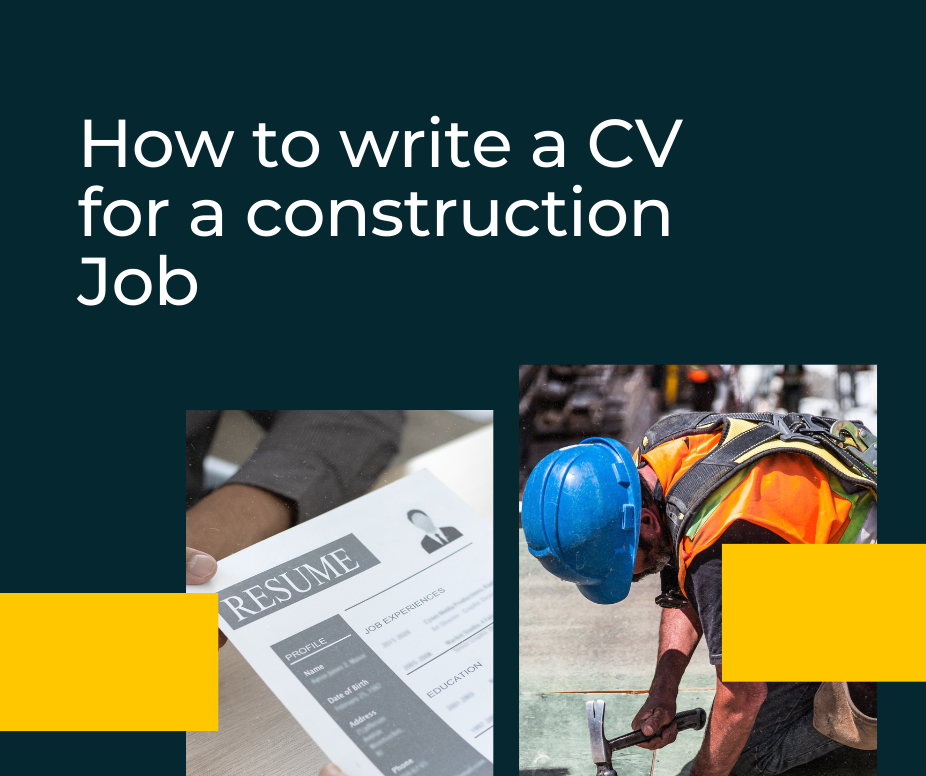Whether you’re applying for an Engineering role, a Labourer position on-site or a Quantity surveyor job, the first step is to make sure you have an up-to-date CV.
Consider the following steps when writing a construction worker CV in anticipation of applying for construction jobs:
1. Research construction work vacancies
Before you apply for a construction vacancy, research the job listings. Note down what the ideal applicant has in experience, education and skills. Many employers expect a tailored CV which is specific to the job vacancy, ensure you note down any keywords so you can include them in your CV.
2. Choose a CV format
Your CV’s format typically comes down to personal preference. So long as it looks professional and is readable, you may use any of the formats below:
- Chronological CV: Chronological CVs are the most common type of CV. They list professional experience and education in reverse chronological order, so employers read your most recent experience first.
- Functional CV: Functional CVs are another popular type of CV. They focus on skills and qualifications instead and are useful for graduates or those with a limited work history.
- Hybrid CV: Hybrid CVs combine elements of chronological and functional CVs. They allow you to choose the elements that you feel represent your competency for the role with less rigidity in structure.
3. Open with your contact information
Make sure you include your contact information at the top of your CV. It should include:
- your full name
- your postal address
- your phone number
- your email address
4. Consider a professional summary
Below your contact information, add a professional summary. Your professional summary should be no more than three sentences long – aim to make a quick, lasting and positive impression. Your professional summary should include information on your background, your career intentions and how the vacancy you’re applying for relates to this.
5. Describe your employment history
The next section to include in your CV is your employment history. List all of your previous jobs that are relevant to the role. When listing your employment history, aim to include the following for each position:
- your job title
- your place of employment
- your period of employment
- your main duties
- your accomplishments in the role
6. Follow on with your education
This section is similar to the employment section in that it’s another chance to demonstrate to employers that you’re a competent and qualified candidate. Similarly to the employment section, list your education history starting with the most recent course of study completed. When listing your education history, aim to include the following for each institution:
- your institution and location of study
- your dates of study
- your qualification title(s)
7. Finish off with relevant skills
The final section of your CV is typically a skills section. This section comprises bullet points that list both hard and soft skills gained throughout your education and employment. As this is a construction CV, place equal emphasis on both hard and soft skills, as they’re both valuable to employers. For example, list core hard skills that you’re qualified in, such as plastering, and any soft skills desired in the construction sector, such as teamwork and communication.

